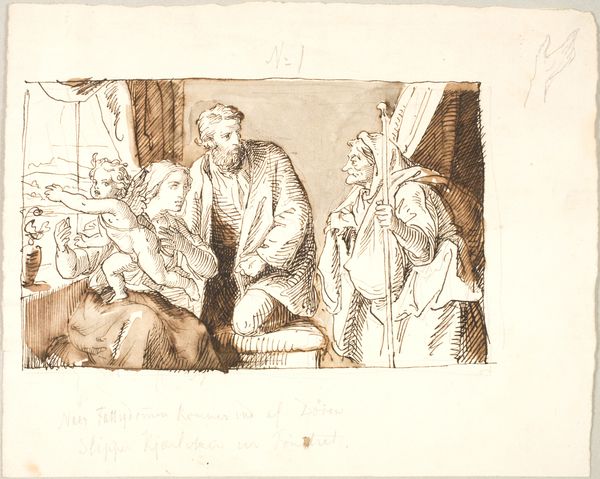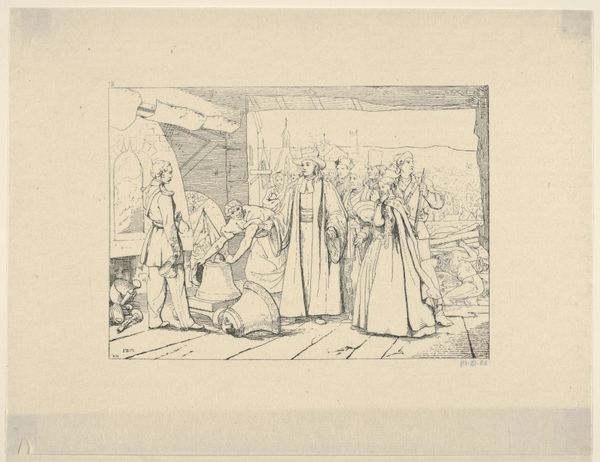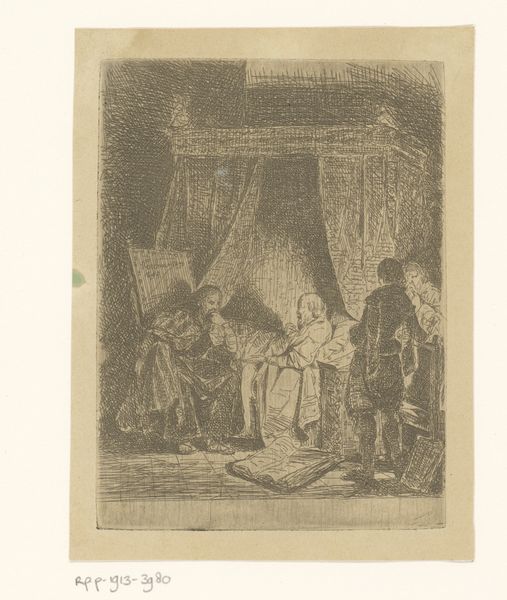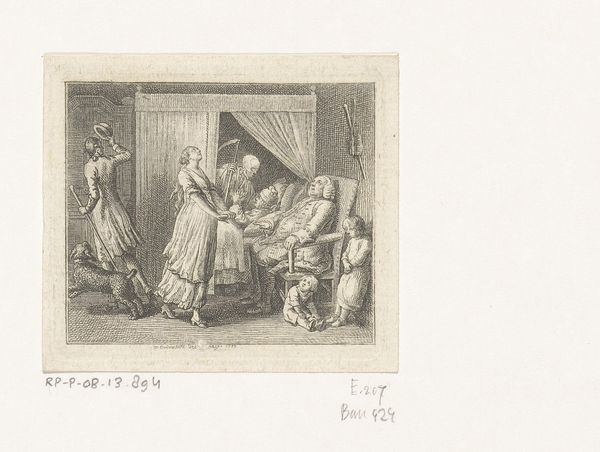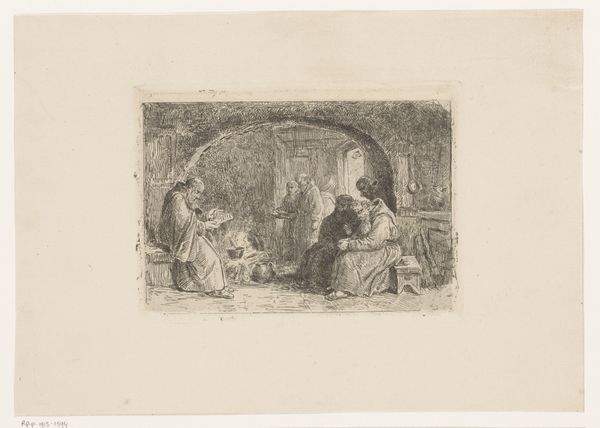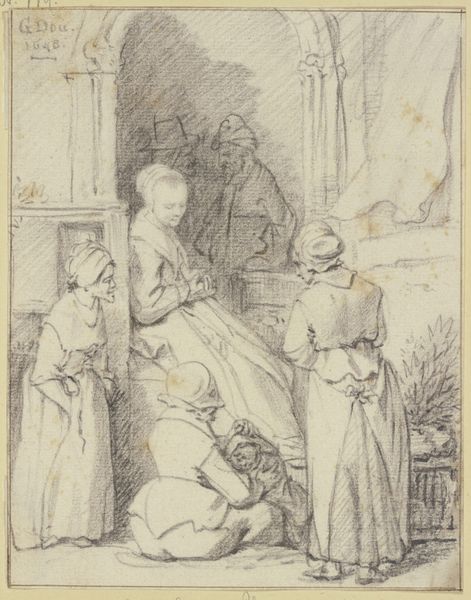
Interieur met een aantal figuren en een man in bed die bezocht wordt door de Dood 1836 - 1912
0:00
0:00
isaacweissenbruch
Rijksmuseum
Dimensions: height 56 mm, width 67 mm
Copyright: Rijks Museum: Open Domain
Editor: Here we have an engraving titled "Interieur met een aantal figuren en een man in bed die bezocht wordt door de Dood," or "Interior with figures and a man in bed visited by Death" by Isaac Weissenbruch, created sometime between 1836 and 1912. It definitely has a somber mood, but also seems very theatrical in its composition. What strikes you about this print? Curator: The formal elements orchestrate the viewer's gaze. Observe how Weissenbruch masterfully manipulates light and shadow, creating a stark contrast that emphasizes the central drama. Note how the figures are arranged; the linear perspective leads us directly to the bed, the locus of the scene, further emphasizing the spectral figure. How does this structured composition guide your understanding of the artwork's narrative? Editor: I hadn't really focused on the use of light to guide the eye before, I was more caught up in the subject matter, but that makes sense. Are the people in the room supposed to be representative of life, and the grim reaper of course representing death? Curator: Indeed. Consider the stark visual language: the crisp lines defining the figure of death sharply contrast with the softer, more fluid lines describing the living figures. The rigidity of the bedframe contrasts with the dynamism of the figures. Note, as well, that Death's gesture is to invite, whereas the gestures of the women seek to stave it off. These formal relationships embody tension between these states. What sense do you make of that dynamic? Editor: So, looking at the lines and how they are used, not just who is in the image, really helps show the emotional story being told here. Thank you. Curator: Precisely. By deconstructing its formal composition, we begin to truly understand the power and intent of the artist's choices.
Comments
No comments
Be the first to comment and join the conversation on the ultimate creative platform.


